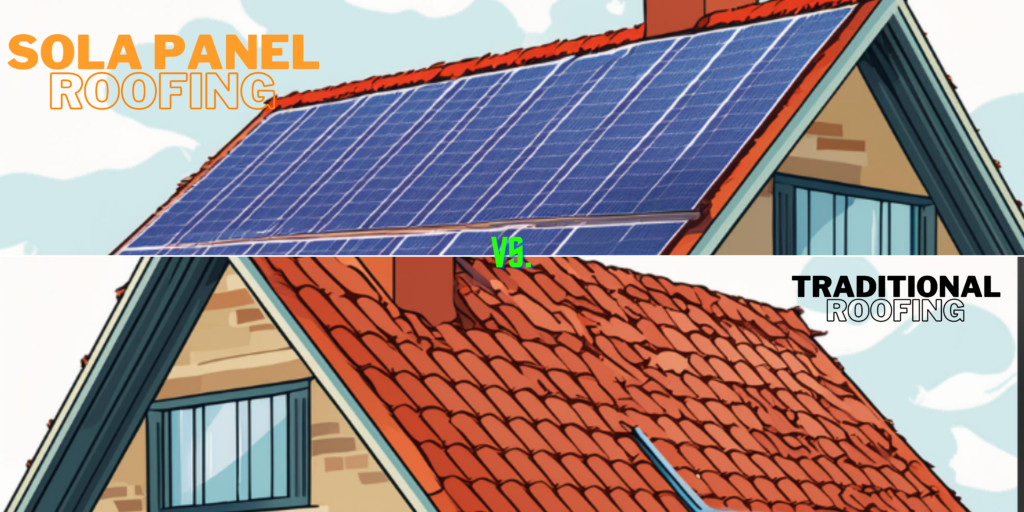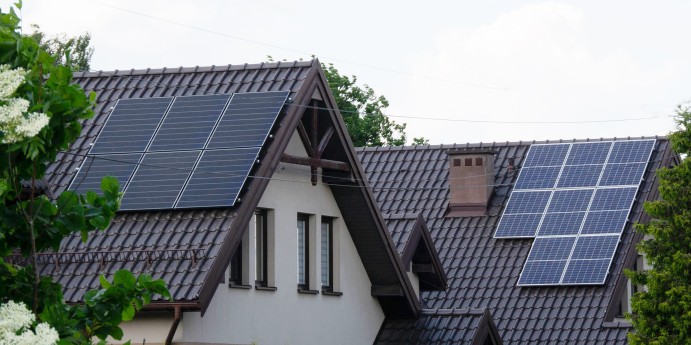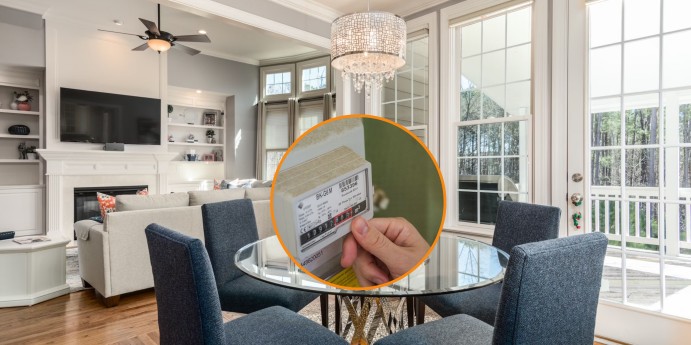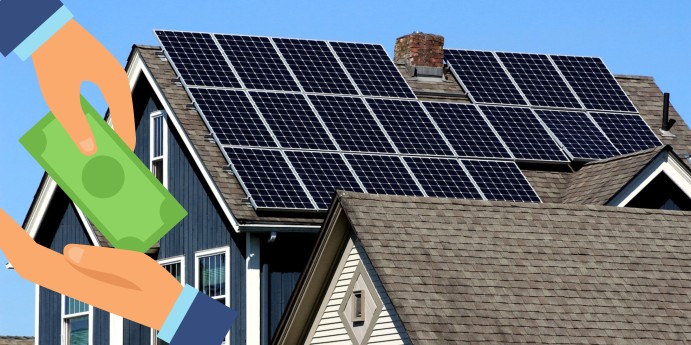Picture this: you’ve owned your home for a few years now, and you realize that you’re due for a re-roof. You learn that there are many options out there, like traditional clay, wood, and metal, but you also learn that solar panel roofing is the new popular trend. How do you choose what’s right for you? Let’s break it down below:
Solar panels come in different shapes and sizes, and have many uses. They use photovoltaic technology that converts sunlight into electricity. They are made of photovoltaic cells that have several layers of silicon conductors. You can read more about how solar panels work here.
Is it really worth it?
Environmental Impact
Solar energy is a renewable energy resource that has the potential to overtake the use of fossil fuels globally. The US is the biggest energy consumer in the world according to the US Energy Information Administration, and the use of nonrenewable energy is still a growing trend. However, this can change, as renewable energy sources are now catching up. In fact, one hour of sunshine here on Earth can provide more energy than the entire world can consume in a year.

Since solar energy only relies on the sun and does not emit carbon or greenhouse gases, it reduces pollution and prevents further damage to the ozone. It is considered clean energy because of its minimal environmental impact compared to traditional fossil fuels. It is highly beneficial in combating climate change.
Solar energy use significantly reduces dependence on fossil fuels like coal, petroleum, and natural gas, which have more damaging environmental impacts. Fossil fuels are finite, and eventually, they will run dry. Generating your own electricity free from the sun without the guilt of ruining Mother Earth is not only rewarding for your home, but empowering for the whole world.
Since it does not require any water to generate electricity compared to other types of power generation like steam turbines, it’s less water waste and allows for more water supply.
Cost Savings
Once you have a fully installed solar panel system on your roof, it can significantly reduce your electricity bill, especially with net metering. There are also a lot of incentives provided by the federal government and your state that will help decrease cost of installation and give you credits for the electricity you’ve shared back into the grid.
Longevity
Solar panels are low maintenance and can last upwards of 20 years. Although there are upfront costs to consider, solar panels provide a substantial ROI or return of investment, and a huge chunk of energy savings over the long run.
Increased Property Value
Since they are a long-term investment, solar panels give your home a marketing advantage when it’s time to sell, as more and more people are interested in getting them installed too–and for the same reasons: increased energy savings, long-term use, and of course, environmental benefits. Homes with solar panels installed often sell faster than listings without them.
- Solar panels come in various types and designs.
- Different design aspects make them aesthetically pleasing from the street or garden view.
- They are available in different colors such as black frame, silver frame, or combinations.
- Solar panels exhibit clean lines and orderly appearance.
- They can complement any roof, enhancing both functionality and beauty of your property.
There are different kinds of traditional roofing used in American homes, like clay tiles, shingles, metal, wood, and slate. Usually, when picking a traditional roof, budget and durability are the main considerations, as well as the general weather in your area.
What makes it different from solar?
Environmental Impact
Traditional roofing materials may not necessarily be environmentally friendly during their production stage. They are often associated with energy-intensive processes, pollution, and even worse, deforestation!
Extraction of the raw materials needed to make these materials disrupts habitats and depletes resources.
The disposal process also becomes tricky, as often, old roofing materials such as asphalt shingles simply end up in landfills and are difficult to recycle.
Economic Considerations
Installation Costs
The general consensus is, they have a lower upfront cost, since they do not have additional panels on top of them, but different materials can also cost differently. It usually depends on which type you choose.
Long-Term Savings
The durability and longevity of traditional roofing can save you money in the long run. Metal roofs can last 40-70 years, while clay tiles can go for a hundred.
Maintenance
Despite its deemed longevity, maintenance for traditional roofs can be a challenge as well. Some types require regular maintenance and repairs, which, over the half-decade of use, can increase overall costs for having them.
Visual Appeal
Traditional roofs give a rustic and classic look to your home, which some people may still prefer. However, there is a growing preference for the modern sleek look that solar panels offer. Either have aesthetic pros to them and come various styles that may appeal to you differently, so aesthetics are definitely a factor when making your choice.
New York
New York City primarily relies on a mix of energy sources, including natural-gas fired power plants, nuclear reactors, and renewable energy options. Moreover, the state offers several programs that include rebates and tax credits to help out with solar installation. Net metering is available and encouraged, as it allows you to sell back surplus energy to the grid.
New Jersey
Similarly, New Jersey also relies on a variety of energy sources, including solar. They offer the same benefits as New York, with rebates, net metering and tax credits through the New Jersey Solar Jobs Act.
Connecticut
Natural gas plants, nuclear power, and renewable energy projects like wind farms and solar are available in Connecticut. They also have a solar incentive program that includes rebates and a ZEC (Zero-Emission Certificate) that allows you to earn money from generating solar energy.
Here’s a breakdown of cost, aesthetics, and environmental impact in comparing solar roofing and traditional roofing:
Factor | Solar Roof | Traditional Roof |
Environmental Impact | Renewable energy resource | Damaging to the environment |
Economic Considerations | Higher upfront cost, long term savings | Lower upfront cost, maintenance costs might pile up |
Aesthetic Value | Sleek and modern | Classic and rustic |
Both solar roofing and traditional roofing have their pros and cons. Before making your decision, consider your budget, aesthetic preference, long-term goals, and environmental impact. Although it may be more expensive at first, going solar has a lot of benefits and for both the environment and your wallet, which makes it totally worth it!
Need help in making your decision? Call our Solar Power experts at +18334786669 or head to our website https://sunlifenow.com/ to book your appointment today. Our products and services come with a 25-year warranty, promising a reliable and sustainable solar energy solution.
Sources and Links:
 833-478-6669
833-478-6669



